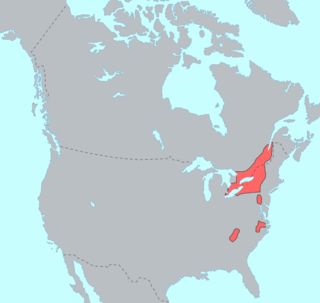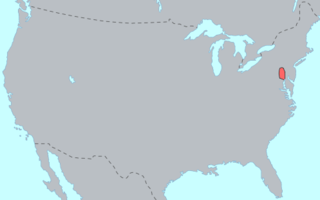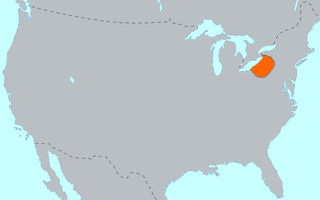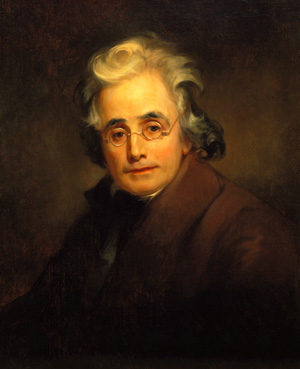
The Beaver Wars, also known as the Iroquois Wars or the French and Iroquois Wars were a series of conflicts fought intermittently during the 17th century in North America throughout the Saint Lawrence River valley in Canada and the Great Lakes region which pitted the Iroquois against the Hurons, northern Algonquians and their French allies. As a result of this conflict, the Iroquois destroyed several confederacies and tribes through warfare: the Hurons or Wendat, Erie, Neutral, Wenro, Petun, Susquehannock, Mohican and northern Algonquins whom they defeated and dispersed, some fleeing to neighbouring peoples and others assimilated, routed, or killed.

Quiripi was an Algonquian language formerly spoken by the indigenous people of southwestern Connecticut and central Long Island, including the Quinnipiac, Unquachog, Mattabessett (Wangunk), Podunk, Tunxis, and Paugussett. It has been effectively extinct since the end of the 19th century, although Frank T. Siebert, Jr., was able to record a few Unquachog words from an elderly woman in 1932.

The Iroquoian languages are a language family of indigenous peoples of North America. They are known for their general lack of labial consonants. The Iroquoian languages are polysynthetic and head-marking.

The Caddoan languages are a family of languages native to the Great Plains spoken by tribal groups of the central United States, from present-day North Dakota south to Oklahoma. All Caddoan languages are critically endangered, as the number of speakers has declined markedly due to colonial legacy, lack of support, and other factors.
Mandan is an extinct Siouan language of North Dakota in the United States.

The Susquehannock, also known as the Conestoga, Minquas, and Andaste, were an Iroquoian people who lived in the lower Susquehanna River watershed in what is now Pennsylvania. Their name means “people of the muddy river.”

The Conestoga River, also referred to as Conestoga Creek, is a 61.6-mile-long (99.1 km) tributary of the Susquehanna River flowing through the center of Lancaster County, Pennsylvania, United States.

Tuscarora, sometimes called Skarò˙rə̨ˀ, was the Iroquoian language of the Tuscarora people, spoken in southern Ontario, Canada, North Carolina and northwestern New York around Niagara Falls, in the United States, before becoming extinct in late 2020. The historic homeland of the Tuscarora was in eastern North Carolina, in and around the Goldsboro, Kinston, and Smithfield areas.

The Erie people were Indigenous people historically living on the south shore of Lake Erie. An Iroquoian group, they lived in what is now western New York, northwestern Pennsylvania, and northern Ohio before 1658. Their nation was almost exterminated in the mid-17th century by five years of prolonged warfare with the powerful neighboring Iroquois for helping the Huron in the Beaver Wars for control of the fur trade. Captured survivors were adopted or enslaved by the Iroquois.

Laurentian, or St. Lawrence Iroquoian, was an Iroquoian language spoken until the late 16th century along the shores of the Saint Lawrence River in present-day Quebec and Ontario, Canada. It is believed to have disappeared with the extinction of the St. Lawrence Iroquoians, likely as a result of warfare by the more powerful Mohawk from the Haudenosaunee or Iroquois Confederacy to the south, in present-day New York state of the United States.

Susquehannock State Park is a Pennsylvania state park on 224 acres (91 ha) in Drumore Township, Lancaster County, Pennsylvania in the United States. The park is on a scenic plateau overlooking the Susquehanna River and Conowingo Reservoir. The park is named for the Susquehannock people, who lived in the area. Susquehannock State Park is located on small roads a few miles south of Pennsylvania Route 372 and west of Pennsylvania Route 272. The nearest city is Quarryville, Pennsylvania, about 12 miles (19 km) East.

Peter Stephen Du Ponceau was a French-American linguist, philosopher, and jurist. After emigrating to the colonies in 1777, he served in the American Revolutionary War. Afterward, he settled in Philadelphia, where he lived the remainder of his years. He contributed significantly to work on the indigenous languages of the Americas, as well as advancing the understanding of written Chinese.
John Campanius, also known as Johan Campanius and Johannes Campanius, was a Swedish Lutheran priest assigned to the New Sweden colony.

The Nottoway are an Iroquoian Native American tribe in Virginia. The Nottoway spoke a Nottoway language in the Iroquoian language family.

Tutelo, also known as Tutelo–Saponi, is a member of the Virginian branch of Siouan languages that were originally spoken in what is now Virginia and West Virginia in the United States.

Great Minquas Path was a 17th-century trade route that ran through southeastern Pennsylvania from the Susquehanna River, near Conestoga, to the Schuylkill River, opposite Philadelphia. The 80-mile (130 km) east-west trail was the primary route for fur trading with the Minquas people. Dutch, Swedish and English settlers fought one another for control of it.
Proto-Iroquoian is the theoretical proto-language of the Iroquoian languages. Lounsbury (1961) estimated from glottochronology a time depth of 3,500 to 3,800 years for the split of North and South Iroquoian.

Nottoway, also called Cheroenhaka, was a language spoken by the Nottoway people. Nottoway is closely related to Tuscarora within the Iroquoian language family. Two tribes of Nottoway are recognized by the state of Virginia: the Nottoway Indian Tribe of Virginia and the Cheroenhaka (Nottoway) Indian Tribe. Other Nottoway descendants live in Wisconsin and Canada, where some of their ancestors fled in the 18th century. The last known speaker, Edith Turner, died in 1838. The Nottoway people are undertaking work for language revival.
Pidgin Delaware was a pidgin language that developed between speakers of Unami Delaware and Dutch traders and settlers on the Delaware River in the 1620s. The fur trade in the Middle Atlantic region led Europeans to interact with local native groups, and hence provided an impetus for the development of Pidgin Delaware. The Dutch were active in the fur trade beginning early in the seventeenth century, establishing trading posts in New Netherland, the name for the Dutch territory of the Middle Atlantic and exchanging trade goods for furs.

The Iroquoian peoples are an ethnolinguistic group of peoples from eastern North America. Their traditional territories, often referred to by scholars as Iroquoia, stretch from the mouth of the St. Lawrence River in the north, to modern-day North Carolina in the south.














